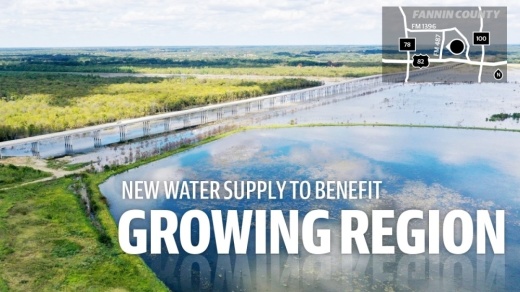The NTMWD, a nonprofit wholesale water provider, estimates that Frisco will use more than 12.9 billion gallons of water in 2022.
The rate increases by the city of Frisco are necessary to meet debt service payments related to the Panther Creek and Stewart Creek wastewater treatment plants, Frisco’s Treasury Manager Brett Peterson said in September.
Frisco continues to grow, and providing water to its 200,000+ residents is a tall order, Kevin Grant, Frisco’s assistant director of public works, said.
“We have to stay focused on our growth, and it’s all of North Texas,” Grant said. “It’s almost like you can’t build it fast enough.”
NTMWD rates will stay flat at $2.99 per 1,000 gallons for members through 2022, marking the third year in a row for this rate. However, rates are projected to increase by 22 cents per 1,000 gallons in 2023 and an additional 16 cents in 2024, per the district’s website.
The water district acts as a water wholesaler and sets rates to cover its expenses for the district’s partner municipalities. From there, cities set their own water rates that they charge to businesses and residents for operating costs, maintenance, expansions and more, the district’s Deputy Director of Water and Wastewater Billy George said.
To help the city stay ahead of how much water it needs to provide, Frisco created a master plan with a consultant about five years ago, Grant said. This plan extends to a 50-year projection, but it is being updated continuously as a living document, he said.
“I’ll use the PGA [headquarters development] as an example. When that came in, our consultant took all of that stuff and added that all into the master plan and changed our water model,” he said. “They’re updating our water model on a regular consistent basis.”
Frisco’s Public Works Department has to remain focused on the needs of the growing population, Grant said. His department needs time to design and then build the infrastructure the city needs.
“At least two years in advance, I need to know that I have to start working on something like a new elevated storage tank,” Grant said.
Next year, the city of Frisco will have a new resource for its water supply with the upcoming Bois D’Arc Lake. This lake will act as a reservoir for the water district’s service area. It is a key project that will help meet the region’s water needs through 2040, George said.
“We are preparing for and prepared for the continued growth, providing for homes and businesses and people,” George said. “Really these kinds of utilities, water being one of the most important, becomes an underlying driver for economic prosperity.”
Without adequate water supplies and wastewater treatments, cities such as Frisco would have a much harder time attracting the business and industries that it does, George said.
Construction for the new Bois D’Arc Lake began in 2018, but planning for this reservoir goes back to the 1980s, George said. This year, the district was able to start impounding water for the lake and building the lake’s dam from the ground up. When full, the top of the lake will reach 534 feet mean sea level. It’s currently at about 510 feet mean sea level, George said. The water should be fully impounded behind the dam and operational beginning in early 2022, he said.
The NTMWD currently draws its water from Lavon Lake to serve its northern member cities. But when Bois D’Arc Lake is finished, the district will be able to pump that water to serve primarily the northern portion of its region, including cities such as Frisco, McKinney and Plano.
“That will then free up capacity from some of our other water supplies, such as Lake Lavon, Lake Chapman, Lake Texoma, so more of that water can serve the eastern and southern portions of the region,” George said. “So the benefits of the new lake are being realized by the entire region.”
Editor's note: The original post has been edited to correct an error. The Bois D'Arc project will help meet the region's needs through 2040.





